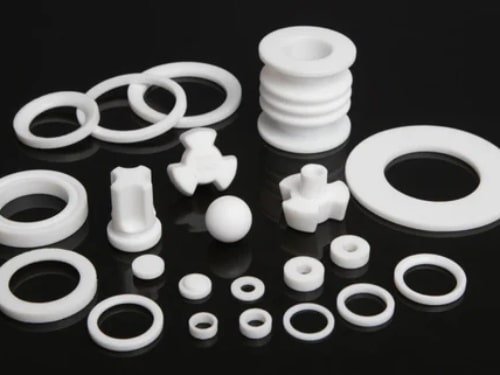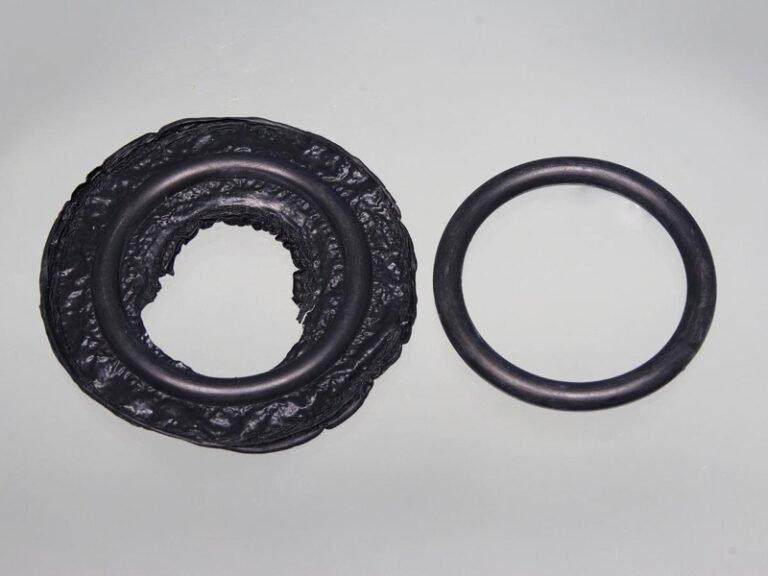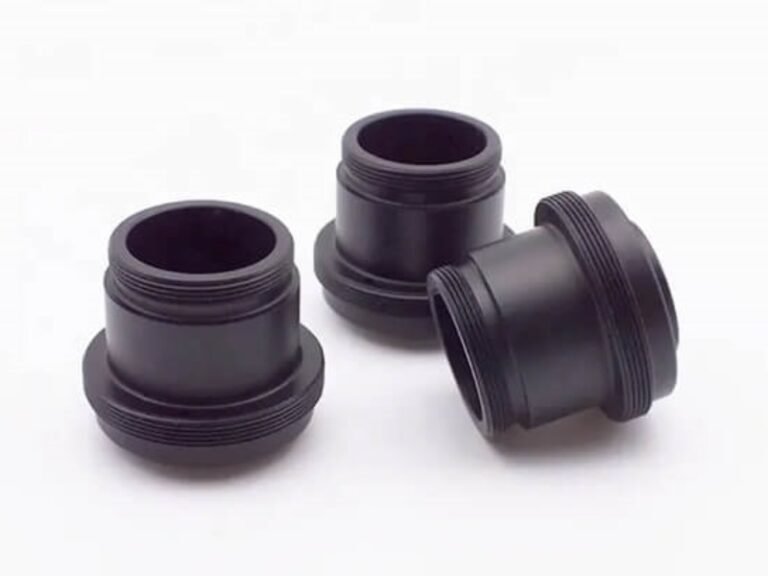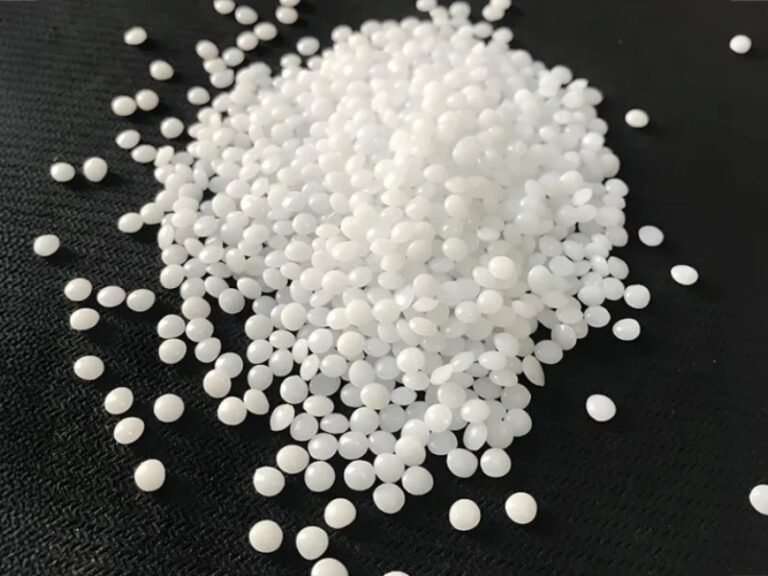From aerospace to medical applications, PTFE molding has become a cornerstone for manufacturing durable, high-precision components. After reading the article, you will learn PTFE material properties, and molding process, which will help to make PTFE molding project successful.
What is PTFE?
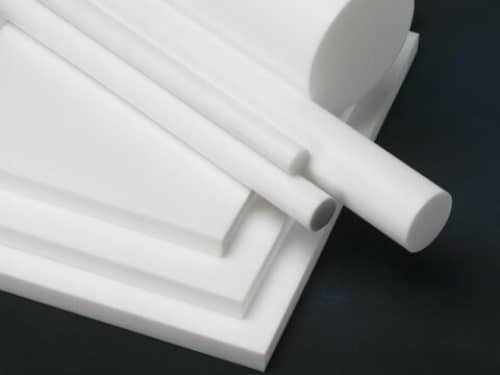
Polytetrafluoroethylene (PTFE), widely recognized as Teflon, is a fluoropolymer defined by its unique carbon-fluorine molecular structure. Renowned for its non-stick surface, exceptional chemical resistance, and ability to perform in extreme temperatures, PTFE is a go-to material for demanding applications.
Properties of PTFE
Polytetrafluoroethylene boasts a rare combination of chemical inertness, resisting corrosion from aggressive acids, alkalis, and solvents, which makes it ideal for harsh environments like chemical processing plants. Its exceptionally low coefficient of friction ensures smooth operation in applications such as bearings and seals, while its thermal stability allows it to perform reliably from -180°C to 260°C, a critical advantage in aerospace and automotive components. The non-stick surface of PTFE, a hallmark of Teflon moulding, facilitates easy release in food processing and medical applications, and its superior dielectric strength supports its use in electrical insulators and connectors. Additionally, PTFE’s biocompatibility, being FDA-approved and non-toxic, enables its use in medical implants and food-contact surfaces.
Advantages and Limitations of PTFE Injection Molding
Advantages
Injection moulding PTFE offers distinct benefits for producing high-precision parts:
- Complex Geometries:Teflon injection molding allows for intricate shapes with tight tolerances.
- High Repeatability: The process ensures consistent quality, crucial for high-volume production of injection molded PTFE components.
- Non-Stick Properties: PTFE’s inherent non-stick surface simplifies demolding, reducing defects and improving efficiency.
- Flexible Design: Ideal for miniaturized or combined-function parts.
Limitations
Despite its advantages, PTFE injection moulding faces several hurdles:
- High Melt Viscosity: PTFE’s gel-like state at melting temperatures (>327°C) demands high-pressure injection systems, increasing equipment costs.
- Sintering Requirement: Post-molding sintering at 360-380°C is necessary to fuse particles, adding time and complexity to the Teflon moulding process.
- Shrinkage Issues: PTFE exhibits 2-5% shrinkage, which can lead to warping if not carefully managed.
- Mold Wear: The material’s reactivity requires non-stick mold coatings and frequent maintenance, raising operational costs.
- Cost: The expense of raw PTFE and specialized machinery makes injection moulding PTFE costlier than other polymers
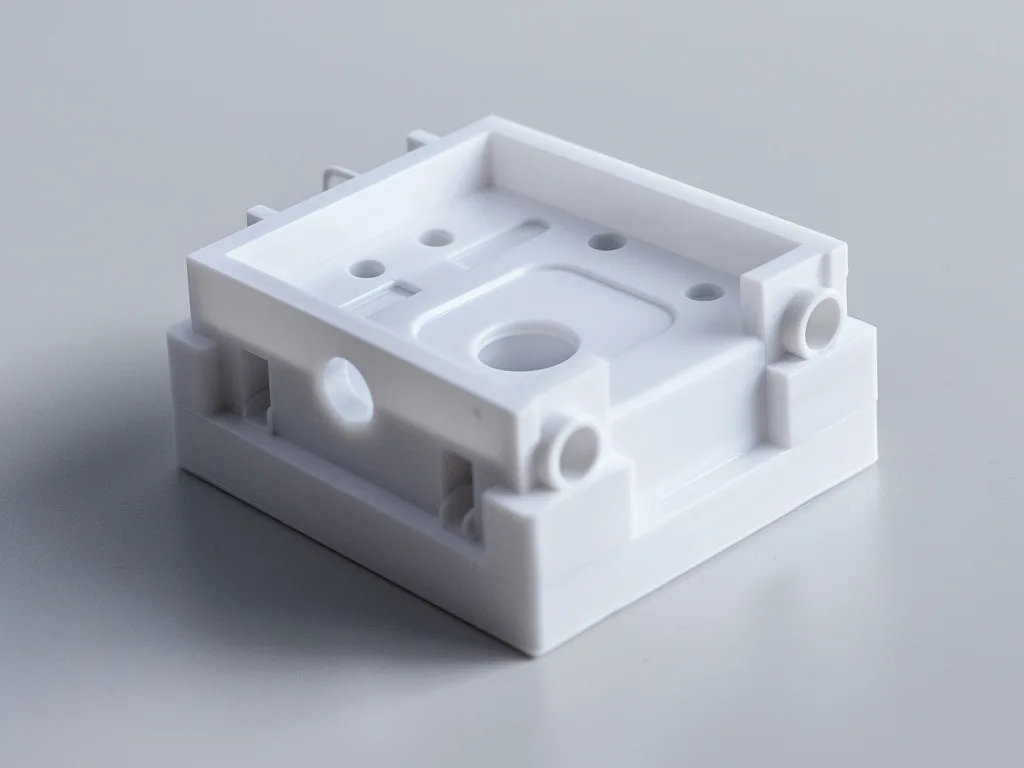
PTFE Injection Molding Service
PTFE Injection Molding Process
The PTFE moulding process for injection molding is a specialized procedure tailored to overcome the material’s high viscosity and thermal sensitivity. Below is a step-by-step overview of Teflon injection molding:

- Material Preparation: Fine PTFE powder or modified compounds are selected based on application needs. Pre-sintering may be applied to improve flowability. Critical moisture removal is performed (by drying) to prevent the formation of bubbles or voids during the teflon moulding process.
- Heating and Injection: The material is heated to approximately 327°C in high-temperature barrels. Specialized high-pressure systems (>10,000 psi) inject the molten PTFE into molds coated with non-stick agents to prevent adhesion.
- Debinding: Processing aids, if used, are removed post-injection to maintain material purity before sintering.
- Sintering: Parts are heated to 360-380°C in a controlled oven to fuse PTFE particles, forming a solid, durable structure.
- Controlled Cooling and Demoulding: After the sintering phase, the part is cooled slowly within the mold. Once cooled, the part is demolded, sometimes followed by further post-processing.
- Finishing: Parts may undergo secondary processes like machining or polishing to meet precision, stringent tolerance or surface finish requirements.
This specialized plastic injection molding service is ideal for producing intricate fluoropolymer parts where precision and performance are non-negotiable.
Alternative PTFE Manufacturing Processes
While PTFE injection moulding excels for specific applications, PTFE’s unique properties often necessitate alternative manufacturing methods to suit diverse part geometries and production scales. Below are the most common processes, including oxidation, with their features and applications:
Compression Molding
PTFE powder is compressed in a mold at room temperature, then sintered at 360-380°C to form solid parts like gaskets, sheets, or seals. This cost-effective method suits low-volume production and larger components but is limited to simpler shapes.
Extrusion Molding
In this process, PTFE paste (a mix of fine powder and lubricant) is extruded through a die to form rods, tubes, or films, followed by sintering to remove the lubricant. Ideal for continuous shapes, it offers moderate precision and is widely used for tubing in medical and chemical industries.
CNC Machining
Pre-formed PTFE billets are machined using CNC tools to create high-precision parts like valve seats or insulators. This method provides flexibility for complex geometries making it suitable for aerospace and electronics where precision is paramount.
Isostatic Molding
PTFE powder is placed in a flexible mold and subjected to uniform hydraulic pressure, followed by sintering. This process excels for complex, uniform parts like medical implants or aerospace components, offering high dimensional accuracy and consistency.
Applications of Injection Molded PTFE Parts
Injection molded Teflon components are integral to various industries due to their exceptional chemical resistance, low friction, and thermal stability. Key applications include:
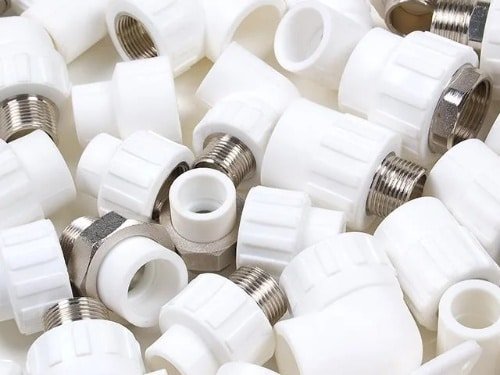
Aerospace: Seals, gaskets, bearings, lightweight housings
Automotive: Bushings, seals, valve seats, pump components
Electronics: High-performance insulators, connectors
Medical Devices: Surgical instrument components, catheters, valves
Chemical Processing: Valve bodies, pump parts, linings, gaskets
Food Processing: Non-stick guide rails, bushings, sealing rings
Semiconductors: Cleanroom valves, manifold parts, filter housings
Design Considerations and Material Selection Tips
Designing for PTFE injection moulding requires careful planning to maximize performance and minimize defects. Key considerations include:
Precision Mold Design
Ensure the mold is accurately machined for tight tolerances. Mold surfaces must be smooth and highly corrosion-resistant to withstand PTFE’s unique flow properties and prevent contamination.
Consider Thermal Behavior
Account for PTFE’s high thermal expansion and cooling shrinkage.
Design dimensional allowances for shrinkage and avoid sharp corners that could lead to part warpage or stress concentration.
Gate and Runner Design
Opt for larger gates and runners to manage PTFE’s relatively high viscosity during injection. Include adequate venting to avoid trapped air, ensuring complete filling and good surface finish.
Uniform Wall Thickness
Keep wall thickness uniform to minimize risks of warpage and inconsistent shrinkage. Design with gradual transitions to distribute stress and prevent crack formation.
Processing Parameters
Adjust injection temperature and pressure according to material specifications; PTFE typically requires higher processing temperatures than standard thermoplastics for optimal flow.
Material Selection Tips
Use high-purity, injection-molding-grade PTFE resins for better flow and mechanical consistency.
For enhanced properties, consider fillers (e.g., glass fiber or carbon) to improve wear resistance, dimensional stability, and compressive strength. Observe that fillers will slightly reduce chemical resistance and increase density.
Store PTFE in dry environments and process promptly to prevent moisture pick-up which could cause molding defects.
Conclucion
PTFE injection moulding harnesses the exceptional properties of PTFE to produce durable, high-precision components for demanding industries. By mastering the Teflon moulding process and exploring alternatives like compression molding and oxidation, manufacturers can meet diverse application needs. Zhongde, as a professional manufacturer, supply design and material selection guide. For expert guidance and tailored PTFE molding solutions, including custom made plastic parts for high-performance applications, contact us today to elevate your manufacturing projects.
FAQ
Yes. Injection molded PTFE retains its excellent chemical resistance properties, making it suitable for use in harsh environments involving acids, bases, and organic solvents.
Injection molding is ideal for complex part shapes, larger production volumes, or when high efficiency and consistency are required. CNC machining is better for producing precision parts in smaller quantities or simpler designs.
